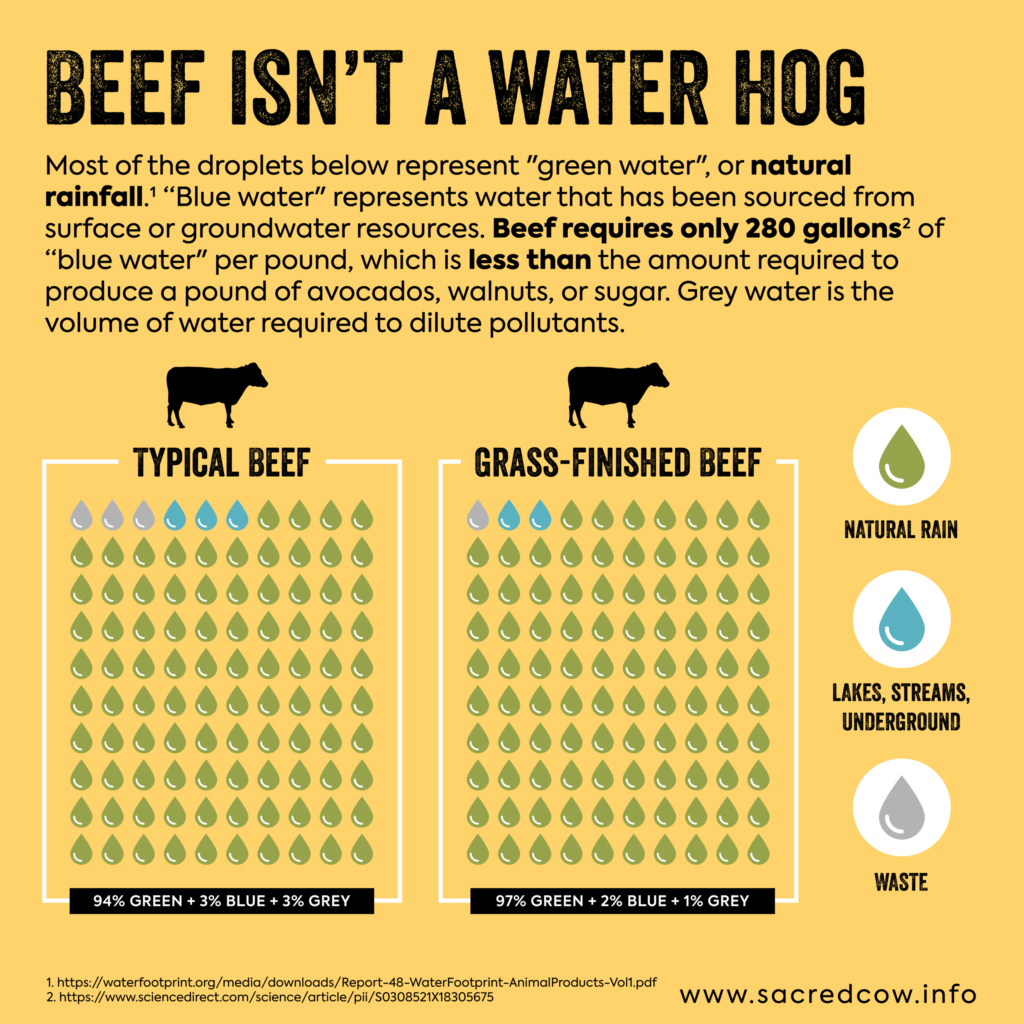Paul Saladino, MD is a doctor, author, and YouTuber who disagrees with those who claim that cows are bad for the environment. In Part 1 of this series, Go Natural Education examined several of Saladino’s arguments and shared some of our own research. In Part 2, we’ll investigate some other assertions from Saladino’s YouTube video, which appears below .
Excerpts from the video transcript appear below in bold. Go Natural Education’s research follows.
Cows take in water, they hold that water, and they put it back into the soil. So if anyone’s looking at water estimates for ruminants, they’re grossly overestimated.
Cows, a type of ruminant, don’t destroy water. Cows drink water and release it back into the environment through urination and defecation. Some of this water is deposited onto the land. The rest evaporates into the atmosphere. Later, that evaporated water is deposited back onto the Earth’s surface in the form of precipitation. It’s all part of the water cycle, the path that water follows as it moves around in different states.
Green water is a term that’s used to describe rainfall and naturally occurring precipitation. Blue water is fresh surface water or groundwater like lakes and rivers. Grey water is freshwater that’s been used in a manmade process. Approximately 95% of the water that a cow consumes is green water, regardless of whether cattle are typically raised or grass-finished. Pardon the watery pun, but let that sink in as you look at the infographic below.
But what about water consumption? Cows are not water hogs. Let’s compare beef to rice, a staple of vegan diets. Some studies claim it takes 280 gallons of water to produce a pound of beef. That’s a lot, but only 4% is blue water. Most of the rest is green water instead. The infographic above clearly shows this. By contrast, rice needs blue water like lakes and ponds to grow – and it requires 410 gallons of water to produce. That’s 30% more water than beef.
Today, crop irrigation is responsible for 70% of the world’s freshwater withdrawals. That’s water that can’t be used for drinking or other forms of human consumption. Plus, runoff from irrigated crops can carry herbicides, pesticides, and other chemicals that pollute blue water. That’s especially significant since the demand for global freshwater is predicted to outstrip supply by 40% by 2030.
Cows are also returning to the environment important bacteria and nitrogen so that the soil is of better quality and so that more plants can grow.
Cow manure and urine also add nutrients to the pastures where cattle are raised. In arid landscapes such as parts of the American West, rainfall will only penetrate the top layer of soil if there is sufficient microbial activity underground. The “waste” from cows keeps grasslands healthy by enriching the soil that contains the microbes that support the plants that prevent topsoil erosion. It’s a virtuous cycle.
Some people still claim that manure is a form of harmful waste, but that’s only the case when it’s highly concentrated and contributes to agricultural runoff. When manure is evenly dispersed, such as with the natural movement of cows or when farmers fertilize their fields, manure helps pastures and feeds the soil. The demonization of animal-based foods might be trendy, but the reality is that cows and the farmers who raise them are not bad for the environment.
